The Streacom F12C Aluminum Desktop Case Review
by E. Fylladitakis on September 14, 2015 9:00 AM ESTThe Exterior of the Streacom F12C Desktop Aluminum Case
The Streacom F12C is clearly a minimalistic design. It highlights the simplicity of plain sandblasted aluminum, with the only aesthetic touches being the rounded corners and bottom edge of the faceplate. The F12C features a simple yet elegant appearance. Measuring 184 × 440 × 320 mm (7.25 × 17.35 × 12.6 in) and with a volume of 0.0259 m3 (25.9 liters), the F12C is one of the largest desktop cases that we have ever seen, yet it still requires about 50% less space than an average tower case. As the case is almost entirely made from aluminum, it is particularly lightweight, tipping our scale at just 4.35kg.
Only a rounded power on button can be seen to the left of the faceplate, with a pinhead LED light right above it. The black spot to the right of the faceplate is an opening for an infrared remote control device, which is optional. There is no opening for an optical media drive, slim or otherwise, which can be an issue for a case intended to hold HTPC systems. This issue aside, there is another series of omissions: there are no front USB or audio jacks, and not even a reset button. To clarify, there are no USB ports on the sides or top of the case either. For an HTPC case, the omission of front USB ports is a critical issue.
There are three rectangular openings at the top and two square openings at either side of the F12C chassis. All of these openings are air vents. The satin black frame surrounding them is a magnet that attaches on metal studs bolted onto the aluminum frame, locking the mesh filter into the cutout.
The mesh filters are very thin and soft, with a high aperture. It unlikely that they are capable of blocking much of the dust from entering the case, as some of the very small dust particles will easily go through the holes. On the other hand, they are very easily removable and washable, making them very practical.
The bottom of the case is simple, with some openings punched to serve as air vents. There are four aluminum circular feet with soft rubber pads attached. The chassis model is etched onto the chassis and there is a small sticker with the serial of the product as well.
The rear of the F12C chassis is very simple and plain design. It essentially looks like a typical tower case that has fallen on its side. An aluminum cover shields the expansion card slot screws. Strangely, there are no ventilation or fan openings, even though there is more than enough space of a small exhaust fan.




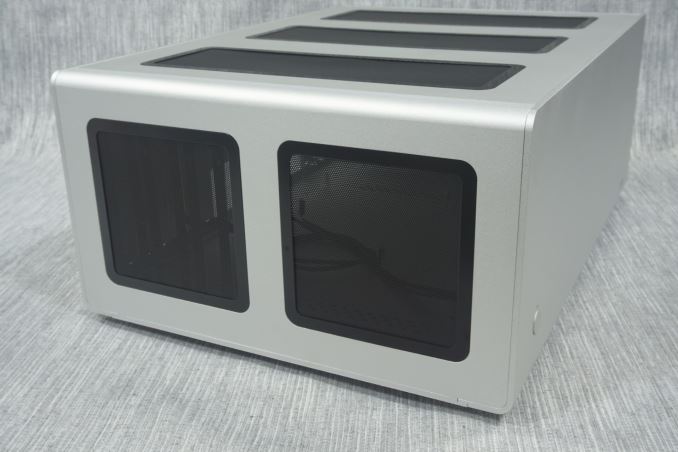
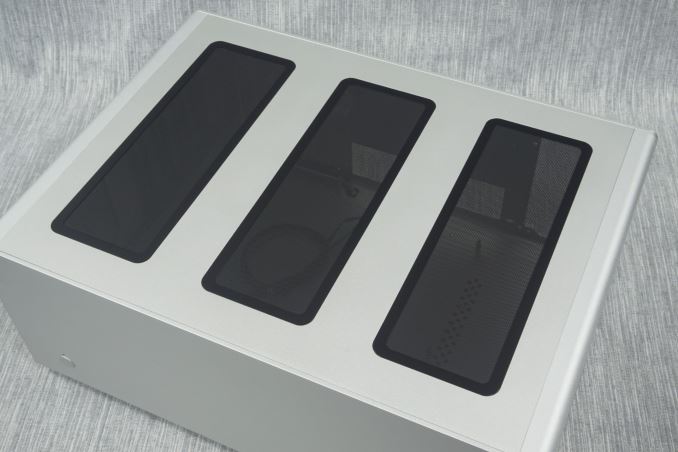
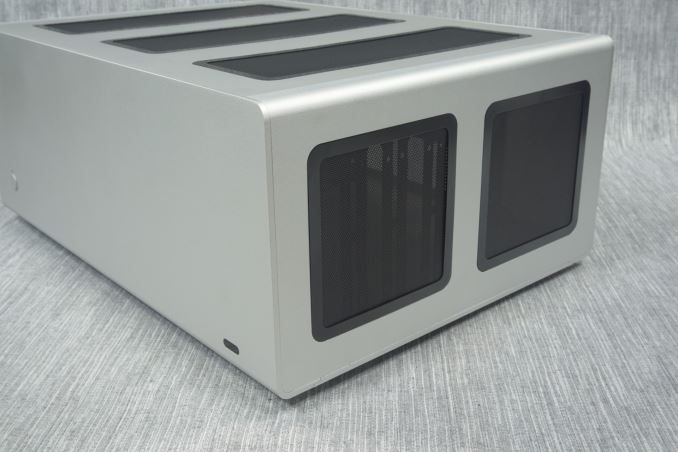

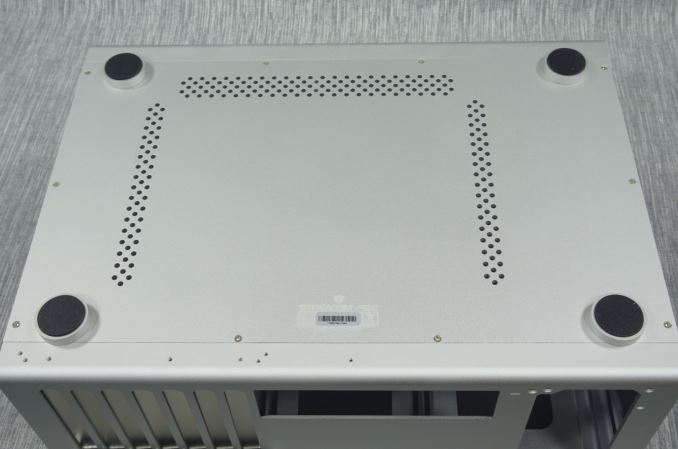
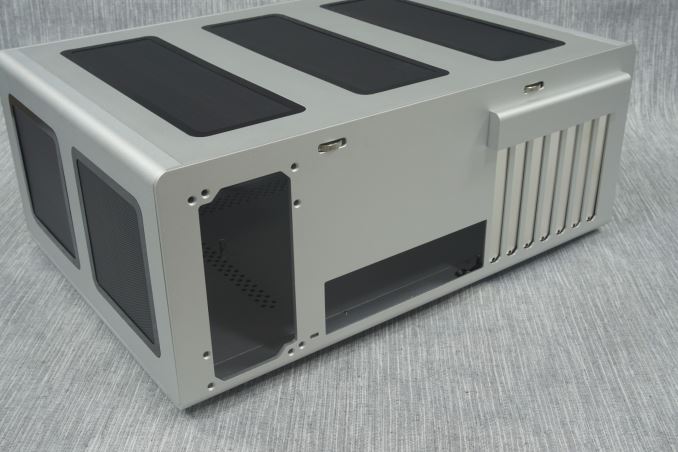








45 Comments
View All Comments
RaistlinZ - Monday, September 14, 2015 - link
A full tower case, put on its side, with ventilation all around...got it.Oxford Guy - Tuesday, September 15, 2015 - link
Not quite."It essentially looks like a typical tower case that has fallen on its side. An aluminum cover shields the expansion card slot screws. Strangely, there are no ventilation or fan openings, even though there is more than enough space of a small exhaust fan."
meacupla - Monday, September 14, 2015 - link
This might have been a decent product, if it were released 10 years ago.These days, it's all about compact mITX systems or compact streaming devices, like nVidia Shield.
Also, IR? really? BT/Wifi remote control is the way to go.
Odeen - Tuesday, September 15, 2015 - link
You can always add an internal USB RF remote receiver (Yaocoo makes one) to any case. The problem is that you're stuck with Yaocoo's remote. IR is important if you want to integrate the HTPC into a home theater system with an IR universal remote.RF is great, but it's not a solution until there's a universal RF remote
nmm - Monday, September 14, 2015 - link
It drives me nuts when I see fan mounts that block 30%+ of the fan area with mounts intended to be compatible with multiple fan sizes.http://images.anandtech.com/doci/9618/manual.jpg
The design is intended to be versatile, but in the end it just winds up being wasteful in my mind.
budabellyx - Tuesday, September 15, 2015 - link
Does it also make toast?Jhlot - Tuesday, September 15, 2015 - link
It looks like a toaster in the first picture.Oxford Guy - Tuesday, September 15, 2015 - link
"The noise of a finalized system will solely depend on the parts chosen by the user. We had to skip directly to our advanced noise testing, exploring the noise dampening capabilities of the case."Not good enough. If you're going to claim its temperature performance is such and such, after adding three fans — and compare that performance with other cases — then you need to post the decibel rating.
Cooling is about decibels per watt... how much noise is generated to cool a specific amount of waste heat. Without the decibel information your review is unfinished.
Oxford Guy - Tuesday, September 15, 2015 - link
It's also a contradiction to say the dust filtration sheets have holes that are too large to effectively capture dust and then praise them for being "very practical".Shouldn't a practical dust filter filter the dust?
E.Fyll - Tuesday, September 15, 2015 - link
And that's why we had its thermal performance posted without the fans - and compared it. A single sentence, "worse even than the BitFenix Neos", is better than five graphs.You may be right about dB(A)/W (although it does not work quite that way) but it is not useful to
I specifically wrote that the filtration sheets have holes that may be too large to stop small dust particles. That is a lot different than "effectively capture dust". If what you mean by "effectively" is "all of it", then the only filter you should consider is a solid wall.
Also, "practical" and "efficient" are two vastly different things. And stating that something is practical for a very specific reason is a very long shot from "praising".